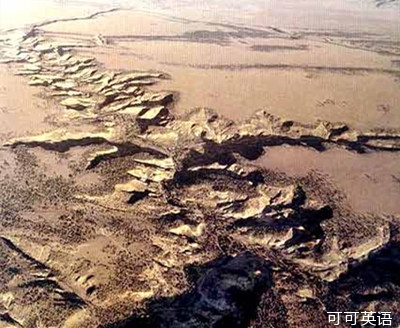Marrow fat doesn't sound tremendously appetising, but it is hugely nutritious - fuel not just for physical strength but also for a large brain. The brain is an extremely power- hungry mechanism. Although it accounts for only 2 per cent of our body weight, it consumes 20 per cent of our entire energy intake, and it requires constant nourishment. Our ancestors of nearly two million years ago, secured their future by being really rather sneaky.
骨髓雖不是什么美味,但營養豐富,既能增強體力,又能滋養大腦。人腦是非常耗能的生理結構,盡管重量僅為體重的2%,卻可消耗20%的能量攝入,并需要源源不斷的養分供給。200萬年前,我們的祖先正是用這樣一種相當卑鄙的方式保障了他們的未來。
When stronger, faster fiercer predators were at rest out of the heat, 'they' were able to look for food. Using tools like this one to obtain bone marrow, the most nutritious part of a carcass, they set in train an ancient virtuous circle. This food for body and mind, meant that larger-brained individuals would survive to breed larger-brained children, capable in their turn of making ever more complex tools, and you and I are just the latest iteration of this continuing process.
那些強壯、迅捷、兇猛的狩獵者乘涼休息時,我們的祖先便伺機而動,尋找食物。他們利用這類工具獲得最有營養的骨髓,建立起了遠古時代的良性循環系統:腦體積較大的原始人生存下來,相應地繁衍出腦體積較大的后代,這些后代繼而能制作出更加復雜的工具,你我不過是這一周而復始的循環過程的終端。
Lots of animals use objects, particularly of course apes, but what sets us apart from them at this moment in our evolution is that, unlike them, we make tools before we need them. And once we have used them we keep them to use again. It's the beginning of the tool box.
能夠利用物品的動物不在少數,類人猿就是一典型代表。但在人類進化史的這一點上,能將我們和這些動物相區別的是,我們可以依據需求制作工具,使用過后,我們會保存工具以備不時之需——這就是工具箱的由來。
The human brain then carries on evolving steadily over thousands of years. And what's really interesting, is that our brain starts to become asymmetrical as it gets to grips with a whole range of different functions - logic, language, the co-ordinated movement needed for tool-making, imagination and creative thought - quite unlike the ape's brain, which remains smaller and symmetrical. So what we're looking at in this chopping tool is the moment at which we became distinctly smarter and with an impulse not just to make things, but to imagine how we could make things 'better'.
隨后的幾千年,人腦穩步進化。有趣的是,隨著人腦功能的分化,衍生出邏輯、語言、以及與制作工具、想象力和創造性思維相關的協調運動等,人腦開始變得不再對稱,與類人猿小而對稱的大腦形成對比。所以,這個工具記錄了這樣一個時刻,我們不僅擁有了更加聰明的頭腦和制作工具的沖動,而且嘗試著精益求精。
"This object sits at the base of a process which has become almost obsessive amongst human beings. This object is something created from a natural substance for a particular purpose, and in a particular way, with a notion in the maker's mind of what he needed it for.
“這件工具是人類苛求完美的最初表現。這件物品是制作者依據需要,利用自然物加以創造,為特殊的目的服務,用特殊的方式打制。
Is it more complex than was needed to actually serve the function which he used it for? I think you could almost say it is. Did he really need to do one, two, three, four, five chips on one side and four on the other? Could he have got away with two? I think he might have done so.
那么這件工具的復雜程度是否已經超出所需?我想你可以這樣講。他真的需要在一面炮制一,二,三,四,五次,另一面四次嗎?兩次行不行?我想他本可以這樣做。
I think the man or woman who held this, made it just for that particular job and perhaps got some satisfaction from knowing that it was going to do it very effectively, very economically and very neatly. In time, you'd say he'd done it beautifully but, maybe not yet ... the start of a journey." (David Attenborough)
我想拿著這件特別設計的工具的人,當預料到那些復雜工序將使它操作起來非常有效、省力、靈活時,大概是獲得了某種滿足感。最終,你會承認他把工具做的很精美,但現在還為時過早……這才僅僅是千里之行的第一步。”——大衛?阿滕伯勒(David Attenborough)












